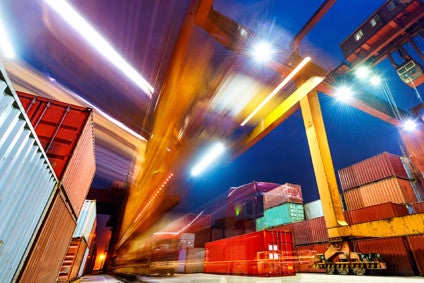
Non-tariff measures are more costly than tariffs for developing countries in almost all sectors, a new report shows.
Nearly 80% of all traded goods are affected by non-tariff measures (NTM), according to a new report by the United Nations Conference on Trade and Development and the World Bank. But the prevalence of NTMs in developed countries is significantly higher than in developing and least developed countries.

Discover B2B Marketing That Performs
Combine business intelligence and editorial excellence to reach engaged professionals across 36 leading media platforms.
Although most NTMs serve legitimate policy objectives, they often raise costs, which can create hurdles to trade and economic development, the report explains. In most sectors, the restrictiveness of NTMs by far exceeds current tariffs.
NTMs are policy measures other than ordinary customs tariffs that can have a potential economic effect on international trade in goods by changing quantities traded, or prices, or both. These can include safety regulations for products, quotas, price controls, and export restrictions.
The agricultural sector is more often regulated than manufactured goods, with technical barriers to trade – used more by developed countries – one of the most frequently used form of NTMs.
According to the report, most NTMs are applied equally to domestic and foreign producers but have different effects on different countries and exporters. Low-income countries tend to be affected more than high-income countries for reasons that include costs of compliance, which are often higher for lower-income countries, and the composition of their export baskets, which tend to consist of more agricultural and apparel products.

US Tariffs are shifting - will you react or anticipate?
Don’t let policy changes catch you off guard. Stay proactive with real-time data and expert analysis.
By GlobalData“While tariffs are clear in their intent, the role of NTMs is less straightforward,” the report explains. “On the one hand, many regulatory NTMs are indispensable for sustainable development. On the other hand, NTMs can also raise costs and create hurdles for trade and economic development. Private sector surveys indicate that technical regulations as well as related processes pose a significant challenge for trade.”
The report also measures the impact of NTMs on trade by estimating their ad valorem equivalents (AVEs), which divide the tariff by the import unit value.
Among the industrial sectors, AVEs tend to be relatively higher in the sectors of apparel, motor vehicles, electrical machinery, communication equipment, and wood and paper. For these categories, the simple average AVEs are more than 5%.
The findings are expected to help policymakers in developing countries determine how best to design policy schemes that enhance their integration into the global economy.
Click here to access the full report.





